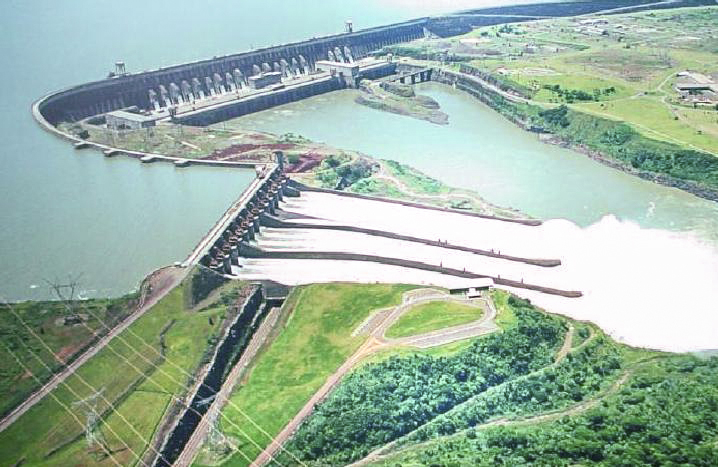|
SST-1 (tokamak)
SST-1 (or Steady State Superconducting Tokamak) is a plasma confinement experimental device in the Institute for Plasma Research (IPR), an autonomous research institute under Department of Atomic Energy, India. It belongs to a new generation of tokamaks with the major objective being steady state operation of an advanced configuration ('D' Shaped) plasma. It has been designed as a medium-sized tokamak with superconducting magnets. The SST-1 project helped India become capable of conceptualizing and making a fully functional fusion based reactor device. The SST-1 System is housed in Institute for Plasma Research, Gandhinagar. The SST-1 mission has been chaired by Indian plasma physicists Prof. Y.C. Saxena, Dr. Chenna Reddy, and is headed by Dr. Subrata Pradhan. Next stage of the SST-1 mission, the SST-2, dubbed as 'DEMO', has already been initiated. History The first talks about SST Mission started in 1994. The technical details and mechanical drawings of the system were fin ... [...More Info...] [...Related Items...] OR: [Wikipedia] [Google] [Baidu] |
Tokamak
A tokamak (; russian: токамáк; otk, 𐱃𐰸𐰢𐰴, Toḳamaḳ) is a device which uses a powerful magnetic field to confine plasma in the shape of a torus. The tokamak is one of several types of magnetic confinement devices being developed to produce controlled thermonuclear fusion power. , it was the leading candidate for a practical fusion reactor. Tokamaks were initially conceptualized in the 1950s by Soviet physicists Igor Tamm and Andrei Sakharov, inspired by a letter by Oleg Lavrentiev. The first working tokamak was attributed to the work of Natan Yavlinsky on the T-1 in 1958. It had been demonstrated that a stable plasma equilibrium requires magnetic field lines that wind around the torus in a helix. Devices like the z-pinch and stellarator had attempted this, but demonstrated serious instabilities. It was the development of the concept now known as the safety factor (labelled ''q'' in mathematical notation) that guided tokamak development; by arrang ... [...More Info...] [...Related Items...] OR: [Wikipedia] [Google] [Baidu] |
Langmuir Probe
A Langmuir probe is a device used to determine the electron temperature, electron density, and electric potential of a plasma. It works by inserting one or more electrodes into a plasma, with a constant or time-varying electric potential between the various electrodes or between them and the surrounding vessel. The measured currents and potentials in this system allow the determination of the physical properties of the plasma. ''I-V'' characteristic of the Debye sheath The beginning of Langmuir probe theory is the ''I–V'' characteristic of the Debye sheath, that is, the current density flowing to a surface in a plasma as a function of the voltage drop across the sheath. The analysis presented here indicates how the electron temperature, electron density, and plasma potential can be derived from the ''I–V'' characteristic. In some situations a more detailed analysis can yield information on the ion density (n_i), the ion temperature T_i, or the electron energy distribution ... [...More Info...] [...Related Items...] OR: [Wikipedia] [Google] [Baidu] |
Megaproject
A megaproject is an extremely large-scale investment project. According to the ''Oxford Handbook of Megaproject Management'', "Megaprojects are large-scale, complex ventures that typically cost $1 billion or more, take many years to develop and build, involve multiple public and private stakeholders, are transformational, and impact millions of people". However, $1 billion is not a constraint in defining megaprojects; in some contexts a relative approach is needed, such as in developing countries, where a much smaller project (such as one with a $100 million budget) could constitute a megaproject. Therefore, a more general definition is "Megaprojects are temporary endeavours (i.e. projects) characterized by: large investment commitment, vast complexity (especially in organizational terms), and long-lasting impact on the economy, the environment, and society". Bent Flyvbjerg, a professor at the Saïd Business School of the University of Oxford says that globally, megaprojects mak ... [...More Info...] [...Related Items...] OR: [Wikipedia] [Google] [Baidu] |
Mega Ampere Spherical Tokamak
Mega Ampere Spherical Tokamak (MAST) was a nuclear fusion experiment, testing a spherical tokamak nuclear fusion reactor, and commissioned by EURATOM/UKAEA. The original MAST experiment took place at the Culham Centre for Fusion Energy, Oxfordshire, England from December 1999 to September 2013. A successor experiment called MAST Upgrade began operation in 2020. Design A spherical tokamak is shaped more like a cored apple than the conventional, doughnut-shaped toroidal design used by experiments such as ITER. Spherical tokamaks are more efficient in their use of the magnetic field. MAST included a neutral beam injector for plasma heating. It used a merging compression technique for plasma formation instead of the conventional direct induction. Merging compression saves central solenoid flux, which can then be used to increase the plasma current and/or maintain the required current flat-top. MAST's plasma volume was about 8 cubic meters. It confined plasmas with densities ... [...More Info...] [...Related Items...] OR: [Wikipedia] [Google] [Baidu] |
European Fusion Development Agreement
EFDA (1999 — 2013) has been followed by EUROfusion, which is a consortium of national fusion research institutes located in the European Union and Switzerland. The European Union has a strongly coordinated nuclear fusion research programme. At the European level, the so-calleEURATOM Treatyis the international legal framework under which member states cooperate in the fields of nuclear fusion research. ThEuropean Fusion Development Agreement(EFDA) is an agreement between European fusion research institutions and the European Commission (which represents Euratom) to strengthen their coordination and collaboration, and to participate in collective activities in the field of nuclear fusion research. In Europe, fusion research takes place in a great number of research institutes and universities. In each member state of the European Fusion Programme at least one research organisation has a "Contract of Association" with the European Commission. All the fusion research organisations ... [...More Info...] [...Related Items...] OR: [Wikipedia] [Google] [Baidu] |
Joint European Torus
The Joint European Torus, or JET, is an operational Magnetic confinement fusion, magnetically confined Plasma (physics), plasma physics experiment, located at Culham Centre for Fusion Energy in Oxfordshire, United Kingdom, UK. Based on a tokamak design, the fusion research facility is a joint European project with a main purpose of opening the way to future nuclear fusion grid energy. At the time of its design JET was larger than any comparable machine. JET was built with the hope of reaching fusion energy gain factor, ''scientific breakeven'' where the fusion energy gain factor ''Q'' =1.0. It began operation in 1983 and spent most of the next decade increasing its performance in a lengthy series of experiments and upgrades. In 1991 the first experiments including tritium were made, making JET the first reactor in the world to run on the production fuel of a 50–50 mix of tritium and deuterium. It was also decided to add a divertor, divertor design to JET, which occurred between ... [...More Info...] [...Related Items...] OR: [Wikipedia] [Google] [Baidu] |
HiPER
The High Power laser Energy Research facility (HiPER), is a proposed experimental laser-driven inertial confinement fusion (ICF) device undergoing preliminary design for possible construction in the European Union. , the effort appears to be inactive. HiPER was designed to study the "fast ignition" approach to generating nuclear fusion, which uses much smaller lasers than conventional ICF designs, yet produces fusion power outputs of about the same magnitude. This offers a total " fusion gain" that is much higher than devices like the National Ignition Facility (NIF), and a reduction in construction costs of about ten times. This opened a window for a small machine to be rapidly built that would reach ignition before NIF. HiPER and the Japanese FIREX designs intended to explore this approach. However, research into the fast ignition approach on smaller machines like the Omega laser in the US demonstrated a number of problems with the concept. Another alternative approach, ''sh ... [...More Info...] [...Related Items...] OR: [Wikipedia] [Google] [Baidu] |
Lawrence Livermore National Laboratory
Lawrence Livermore National Laboratory (LLNL) is a federal research facility in Livermore, California, United States. The lab was originally established as the University of California Radiation Laboratory, Livermore Branch in 1952 in response to the detonation of the first atomic bomb by the Soviet Union during the Cold War. It later became autonomous in 1971 and was designated a national laboratory in 1981. A federally funded research and development center, Lawrence Livermore Lab is primarily funded by the U.S. Department of Energy and it is managed privately and operated by Lawrence Livermore National Security, LLC (a partnership of the University of California), Bechtel, BWX Technologies, AECOM, and Battelle Memorial Institute in affiliation with the Texas A&M University System. In 2012, the laboratory had the synthetic chemical element livermorium (element 116) named after it. Overview LLNL is self-described as a "premier research and development institution for ... [...More Info...] [...Related Items...] OR: [Wikipedia] [Google] [Baidu] |
National Ignition Facility
The National Ignition Facility (NIF) is a laser-based inertial confinement fusion (ICF) research device, located at Lawrence Livermore National Laboratory in Livermore, California, United States. NIF's mission is to achieve fusion ignition with high energy gain. It achieved the first scientific breakeven controlled fusion experiment on December 5, 2022, with an energy gain factor of 1.5. It supports nuclear weapon maintenance and design by studying the behavior of matter under the conditions found within nuclear explosions. NIF is the largest and most powerful ICF device built to date. The basic ICF concept is to squeeze a small amount of fuel to reach pressure and temperature necessary for fusion. NIF hosts the world's most energetic laser. The laser heats the outer layer of a small sphere. The energy is so intense that it causes the sphere to implode, squeezing the fuel inside. The implosion reaches a peak speed of , raising the fuel density from about that of water to ... [...More Info...] [...Related Items...] OR: [Wikipedia] [Google] [Baidu] |
Max-Planck-Institut Für Plasmaphysik
The Max Planck Institute for Plasma Physics (german: Max-Planck-Institut für Plasmaphysik, IPP) is a physics institute investigating the physical foundations of a fusion power plant. The IPP is an institute of the Max Planck Society, part of the European Atomic Energy Community, and an associated member of the Helmholtz Association. The IPP has two sites: Garching near Munich (founded 1960) and Greifswald (founded 1994), both in Germany. It owns several large devices, namely * the experimental tokamak ASDEX Upgrade (in operation since 1991) * the experimental stellarator Wendelstein 7-X (in operation since 2016) * a tandem accelerator * a high heat flux test facility (GLADIS) Furthermore it cooperates closely with the ITER, DEMO and JET projects. Scientific divisions * Tokamak Scenario Development * Plasma Edge and Wall * Stellarator Heating and Optimization * Stellarator Dynamics and Transport * Stellarator Edge and Divertor Physics * Wendelstein 7-X Operations * Ste ... [...More Info...] [...Related Items...] OR: [Wikipedia] [Google] [Baidu] |
Wendelstein 7-X
The Wendelstein 7-X (abbreviated W7-X) reactor is an experimental stellarator built in Greifswald, Germany, by the Max Planck Institute for Plasma Physics (IPP), and completed in October 2015.Introduction – the Wendelstein 7-X stellarator Retrieved 5 November 2014. Its purpose is to advance stellarator technology: though this experimental reactor will not produce electricity, it is used to evaluate the main components of a future plant; it was developed based on the predecessor experimental reactor. , the ... [...More Info...] [...Related Items...] OR: [Wikipedia] [Google] [Baidu] |




